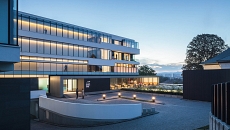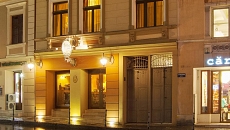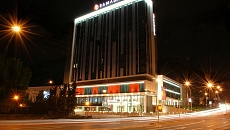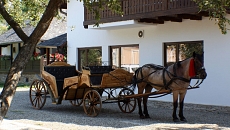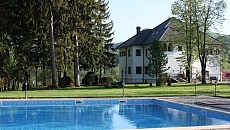12 Day escorted tour from Bucharest to Bucharest
New: Guaranteed departure 2022 - to be advised soon
Introduction
The magnificent mountain country of the Carpathians is now justly famous worldwide, and alone would justify a trip to Romania; however, such a visit is immensely enhanced by exposure to the wide range of historic monuments and art works, stretching from sophisticated Bronze Age pottery up to the works of Brancusi.
Ancient Dacia was the last province to be added to the Western Roman Empire but a high material culture had already been achieved long before the legions moved in. This is clear from the accomplished designs of second millennium pottery, and above all, from the superb Thracian Gold in Bucharest, which combines motifs borrowed from the ancient Near East with the vocabulary of Hellenistic decoration.
Romania was a ‘late developer’ in the middle ages, and strong feudal principalities did not emerge till the 14th century, when the Turks were already penetrating the Balkans. Despite this, in Orthodox Vallachia and Moldavia, the rulers fostered a courtly culture which shows the strong impact of the Byzantine world. One should also note the unusual quality of church textiles and metal work of the 14th-17th centuries, the finest of which are assembled at Putna Monastery.
For most people, however, the highlight of the tour is the painted monasteries of the Bucovina area, resplendent with colour both within and without, and standing in rich upland valleys of the best Carpathian landscape. These 16th century monuments (often described as the finest flower of post- Byzantine monumental art) show all, how even in a time of political struggle, the vitality of Christian culture in Moldavia continued unabated. The Moldavian style in architecture, begun earlier in a peaceful interlude under Stephen the Great and his son Petru (1457-1547), has a distinctive narrow aspect with large overhanging eaves and some Gothic features.
The legendary Transylvania region presents a different picture, having since the early Middle Ages been largely under the suzerainty of Austro-Hungarian Empire, and thus essentially part of a Central European cultural world. Hence the gothic churches of Bistrita, Brasov and Sibiu, the Teutonic appearance of Bran Castle, the Bavarian look of Peles Castle, all evidence of the prosperity of the German dominated merchant guilds. An unusual feature of this area is the peasant fortresses erected by the Lutheran villagers around their local churches, as bastions against Turkish aggression. Austrian Baroque makes its appearance under the Habsburgs, e.g. in Sibiu (Hermannstadt, former 2007 European Cultural Capital).
Finally, one is struck by the quality of Romanian popular art, whose vitality is still very much alive today. Lively pottery designs, bright textiles, carved woodwork are all part of a long-established tradition and a unique product of peasant creativity is the delightful naive art of icon-painting on glass. The appreciation of all these things is much heightened by experiencing the equally vital traditions of friendliness and hospitality of Romanian country people.
Period of validity: 18th of April – 31st of October 2021/2022 for groups of 20-35 guests
Copyright © 2015-2021 Dante Travel Ltd., All rights reserved.
























